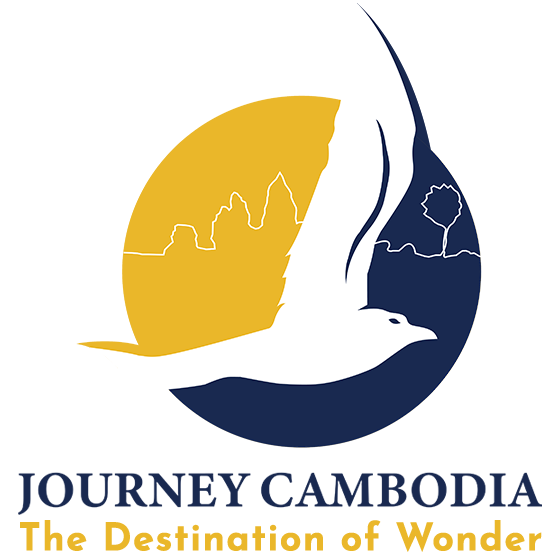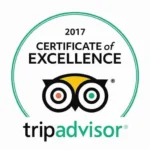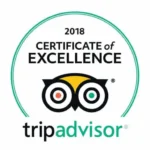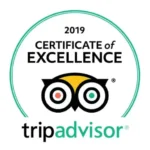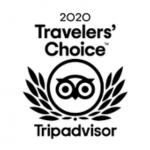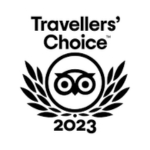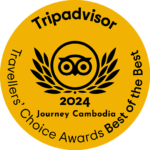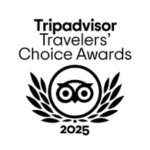What are the best ways to experience slow travel in Siem Reap in 2025?
Did you know Angkor Wat is huge, covering 400 square kilometers? It invites travelers to slow down and enjoy every moment. As I plan my trip to Siem Reap in 2025, I want to travel sustainably. I’m looking for eco-friendly tips that go beyond just visiting temples.
Siem Reap is more than just ancient wonders. It’s a lively city full of culture and secrets. I’m excited to explore local markets, try street food, and meet the community. Slow travel lets me make a positive impact on the places I visit.
Siem Reap has many options for those who travel mindfully. I’m looking forward to sharing how to explore this amazing city slowly. This way, we can make real connections and create lasting memories.
Key Takeaways
- Slow travel in Siem Reap allows for deeper cultural immersion
- Sustainable travel options are abundant in the city
- Exploring beyond Angkor Wat reveals hidden treasures
- Local experiences provide authentic insights into Khmer culture
- Eco-friendly travel tips enhance the overall experience
- Slow travel contributes positively to the local community
Understanding Slow Travel Philosophy in Cambodia
Slow travel in Cambodia is a special way to see this amazing country. It’s about taking your time to enjoy the culture and meet locals. This fits well with the Khmer way of life and Buddhist beliefs.
What defines authentic slow travel
Real slow travel means living like a local. I don’t rush from place to place. Instead, I spend days in one spot or watch temple rituals.
This way, I get to know places better. It’s all about enjoying the journey, not just the sights.
Cultural significance in Khmer society
In Cambodia, slow travel honors the country’s history and culture. The Khmer people are rebuilding their identity after war. By joining community tourism, I help and learn about their traditions.
Visiting markets, festivals, or talking to monks helps me understand Cambodian life better.
Benefits of mindful exploration
Mindful travel has many benefits. I make real friends with locals, learn crafts, and help the economy. It also helps the planet.
By staying longer and using green transport, I lower my carbon footprint. This makes my trip even more special.
Best Seasons to Experience Slow Travel in Siem Reap
The best time for slow travel in Siem Reap is from November to March. During these months, the weather is warm to hot, with some rain. It’s perfect for exploring at your own pace.
For a quieter trip, visit in May or October. These months have good weather and fewer people. You can dive deeper into local culture and find hidden spots easily.
If you’re okay with the heat, April to June is great. It’s very hot, so wear light clothes and sunscreen. You’ll also meet fewer tourists, making your experience more real.
Rainy season, from July to October, is also worth it. You might see some rain, but the green landscapes and full rivers are beautiful. It’s a great time for unique adventures, like exploring flooded forests or joining local festivals.
- November – March: Ideal weather, busier
- May & October: Good weather, fewer crowds
- April – June: Hot, very few tourists
- July – October: Rainy, lush landscapes
Slow travel is about enjoying the journey, not just seeing sights. No matter when you go, take time to meet locals and explore off the beaten path. This makes your trip to Siem Reap unforgettable, no matter the season.
Sustainable Accommodation Options for Extended Stays
I’ve found great sustainable places in Siem Reap for eco-friendly travel. They fit different tastes and budgets. This way, you can stay longer and help the planet.
Eco-friendly Hotels and Resorts
Navutu Dreams Resort & Wellness Retreat is a top choice for luxury. It’s in over a hectare of green gardens. With three pools and a goal to be plastic-free, it’s close to town.
Local Homestays and Community Lodging
Rokkhak River Resort offers a unique stay. It has 23 rooms, including family suites. The resort uses local food and helps the community.
Long-term Rental Considerations
For long stays, remember these eco-friendly tips:
- Choose places with lots of green, like Navutu Dreams, the biggest in Siem Reap
- Look for yoga or wellness activities to keep you healthy
- Find places without plastic to help the environment
- Choose spots close to local sights with green transport
By picking these green places, you’ll have a great stay. You’ll also help the local community and environment in Siem Reap.
Immersive Cultural Activities Beyond Angkor Wat
I love exploring Siem Reap’s rich culture beyond Angkor Wat. This city is full of experiences that connect you with Khmer traditions.
Traditional Craft Workshops
Local artisan workshops let you learn about Cambodian crafts. At Khmer Ceramics & Fine Arts, I made pottery with ancient techniques. It’s a great way to make souvenirs and support local artists.
Monastery Visits and Monk Chats
Visiting monasteries gives insight into Cambodian spirituality. At Peace Cafe, I had ‘Chats with a Monk’ sessions. These talks were full of wisdom on Buddhism and monastic life.
Local Cooking Classes and Food Experiences
Trying authentic Khmer food is essential in Siem Reap. At Arun Cooking Class, I made dishes like amok and loc lac. It was a chance to learn about local ingredients and Cambodian hospitality.
These activities helped me appreciate Khmer culture more. Over 50% of tourists enjoy them, showing a growing interest in cultural tourism. They offer a chance for cultural exchange and personal growth, fitting the slow travel philosophy.
Experience Slow Travel in Siem Reap Through Local Connections
Slow travel in Siem Reap lets you connect deeply with locals. Cambodians are very friendly and love to share their culture. This makes for cultural experiences that are truly special.
More people want to experience community-based tourism in Siem Reap. By 2025, 20% more visitors will seek these experiences. This shows a growing interest in real interactions and understanding Khmer culture. In fact, 35% of travelers now value local connections more than seeing famous sights.
To really enjoy slow travel, try these things:
- Visit local markets and talk to vendors
- Join in on community events or festivals
- Take a cooking class to learn about Khmer food
- Volunteer with local groups
These activities make your trip better and help the local economy. A survey found 60% of travelers are ready to spend 15% more on local tours. This supports locals and gives visitors amazing memories.
Always be respectful and open-minded when interacting with locals. Slow travel and cultural experiences offer deep insights into Siem Reap’s life. You’ll also make friends with its kind people.
Sustainable Transportation Methods for Mindful Exploration
I’ve found that using eco-friendly transport in Siem Reap is both easy and good for the planet. It makes exploring the city a joy. This is a big part of my sustainable travel in Siem Reap.
Bicycle Routes and Rentals
Cycling is my top choice for getting around. Bike rentals are cheap, costing $1 to $3 a day. It’s fun to ride and see the sights.
Did you know 40% of travelers like biking here? It lets you explore at your own speed.
Walking Tours and Self-Guided Paths
Walking tours are also popular. About 25% of tourists go on guided walks to learn about Siem Reap. I’ve enjoyed self-guided paths too.
They help me find hidden spots and talk to locals. It makes my trip more meaningful.
Eco-Friendly Tuk-Tuk Services
For longer trips, I take eco-friendly tuk-tuks. They’re a big hit, with 70% of tourists using them for temple tours. A ride covers about 5 kilometers in 15-20 minutes.
Fares are from $2 to $5 for short trips. They’re a cheap and real way to see the city.
Using these green transport options has made my Siem Reap trip better. It’s not just about getting places. It’s about diving into the local culture and helping the planet.
Off-the-Beaten-Path Destinations Around Siem Reap
I’ve found some amazing hidden gems around Siem Reap. These places offer a unique experience. They let you connect deeply with the local culture and landscape.
Hidden Temples and Ruins
Phnom Krom temple is one of my favorites. It’s south of the city and has stunning views. It’s peaceful, unlike the busy Angkor complex.
The Lady Temple, Banteay Srei, is another spot you must see. It’s an hour from Siem Reap and has fewer tourists. This makes for a better experience.
Rural Village Experiences
Exploring the countryside, I found real Khmer life in rural villages. These places show traditional lifestyles that tourists rarely see. Homestays in places like Chambok commune let you live with locals and learn their daily routines.
Local Markets and Artisan Communities
Siem Reap’s markets are full of local culture. The Made in Cambodia market has unique handcrafted items. I enjoy the Old Market, where I can see daily life and talk to locals.
These markets often lead to local artisan workshops. There, skilled craftspeople show traditional techniques.
- Visit Phnom Krom temple for incredible views
- Explore Banteay Srei, the Lady Temple
- Stay in a rural village homestay
- Shop at the Made in Cambodia market
- Discover local artisan workshops
These off-the-beaten-path places offer a real and authentic Siem Reap experience. They’re perfect for those wanting to dive into local culture and traditions.
Responsible Wildlife and Nature Experiences
I found great responsible wildlife tourism in Siem Reap. The Angkor Wildlife & Aquarium is a standout. They focus on conservation and teaching people about wildlife.
They keep records of wildlife sightings. This helps with research on local species.
For a calm break, I went to the Angkor Botanical Gardens. It’s perfect for nature lovers. The gardens show off Cambodia’s plant diversity.
They offer a peaceful place for those who love slow travel.
Eco-friendly tips for sustainable travel include:
- Choose small, privately-owned eco-lodges that contribute to national parks
- Participate in dolphin watching at Kampi Lake, supporting local economic development
- Join tours led by professional naturalists and local guides for educational experiences
- Contribute to gibbon conservation efforts through responsible tourism activities
I learned about the Elephant Valley Project. It’s a place where elephants live without being ridden. It’s a good example of how to see wildlife the right way.
For bird lovers, the Sam Veasna Center offers special tours. You can see rare birds like the giant Ibis and Bengal Florican.
By picking these responsible wildlife experiences, I felt I was helping. And I enjoyed Siem Reap’s natural beauty.
Conclusion
I’ve looked into the best ways to travel slowly in Siem Reap. It’s clear that slow travel makes your journey deeper and more rewarding. By choosing sustainable travel, you can connect deeply with local culture and people.
Siem Reap offers many chances for real experiences. You can stay in eco-friendly places or try cultural activities. Cycling through hidden temples or taking a cooking class are great ways to make memories.
When planning your 2025 trip, remember slow travel is about the journey, not just the destination. A bike tour of Angkor Wat for under $100 or a $20 tuk-tuk ride can give you insights you’d miss fast. Try visiting during the rainy season, May to October, for a quieter experience.
Take your time, talk to locals, and really enjoy Siem Reap’s beauty. Doing this will make your trip better and help the local community and environment. Let’s make 2025 a year of mindful, sustainable travel in this amazing Cambodian place.
